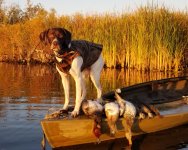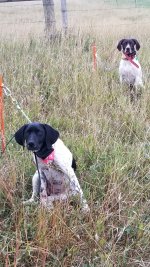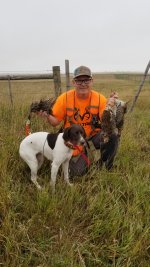Munster927
Well-known member
From my experience when I got my 2nd, I hunted them separate when my youngest was a pup. Too much "playing" from her and not enough hunting at times. Since your 2nd is young, I would keep am eye on that and if they want to do more playing than hunting, run them separate.
You shouldn't have any problems from your older one, they know the routine I assume. They just may get messed up by the younger one if they're screwing around.
My youngest will be 3.5 this fall so I'm anticipating she will be able to just hunt.
You shouldn't have any problems from your older one, they know the routine I assume. They just may get messed up by the younger one if they're screwing around.
My youngest will be 3.5 this fall so I'm anticipating she will be able to just hunt.



